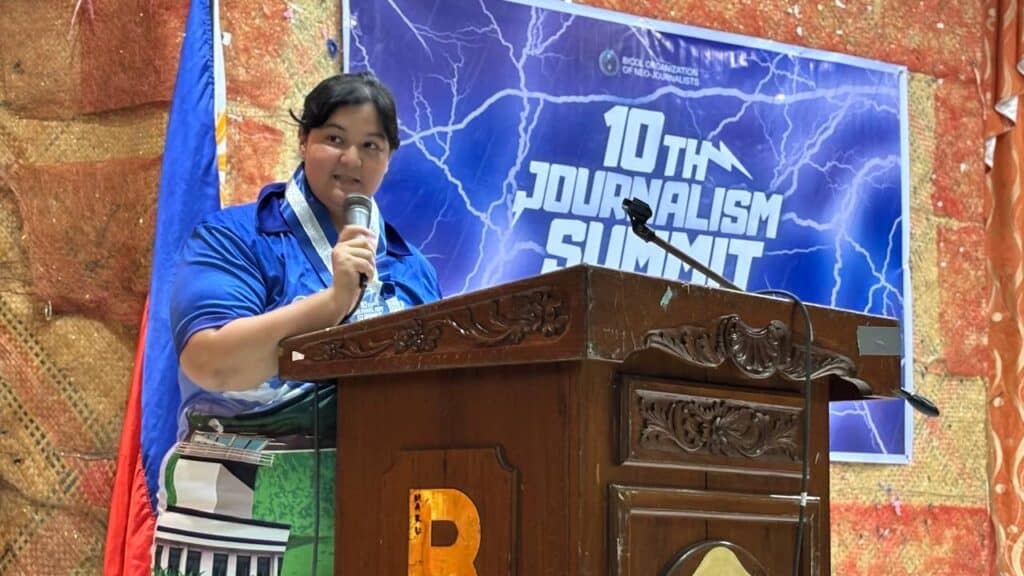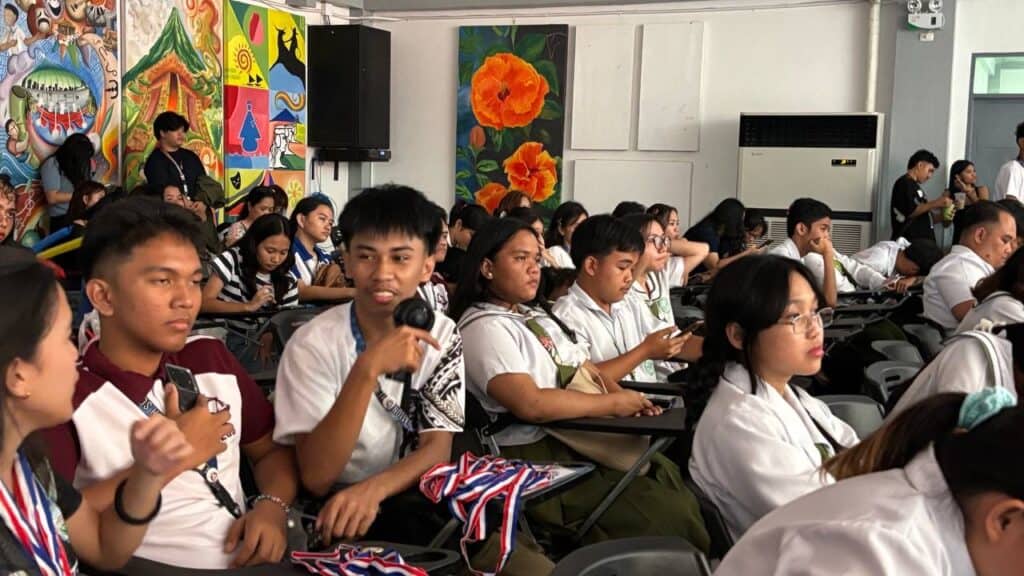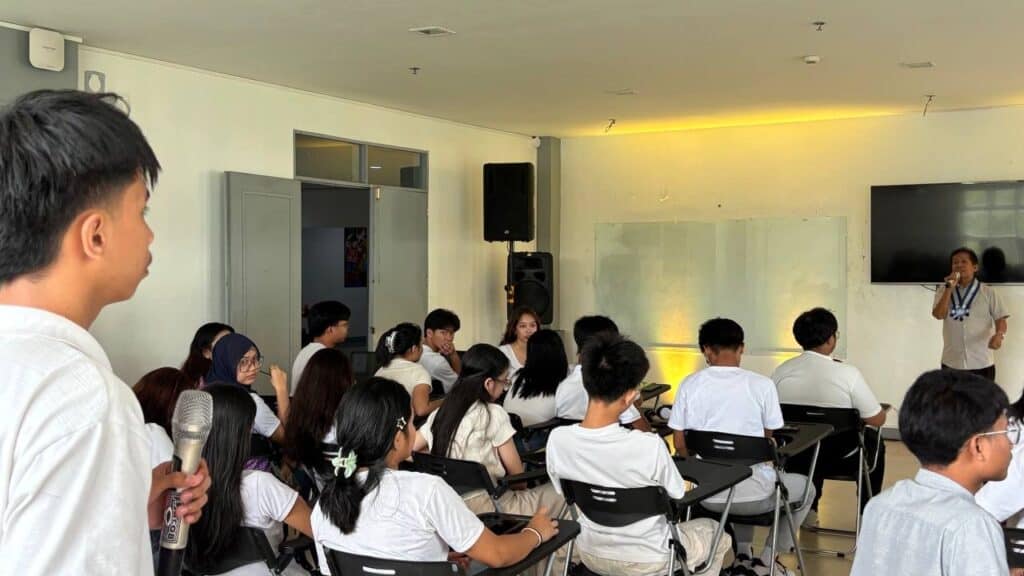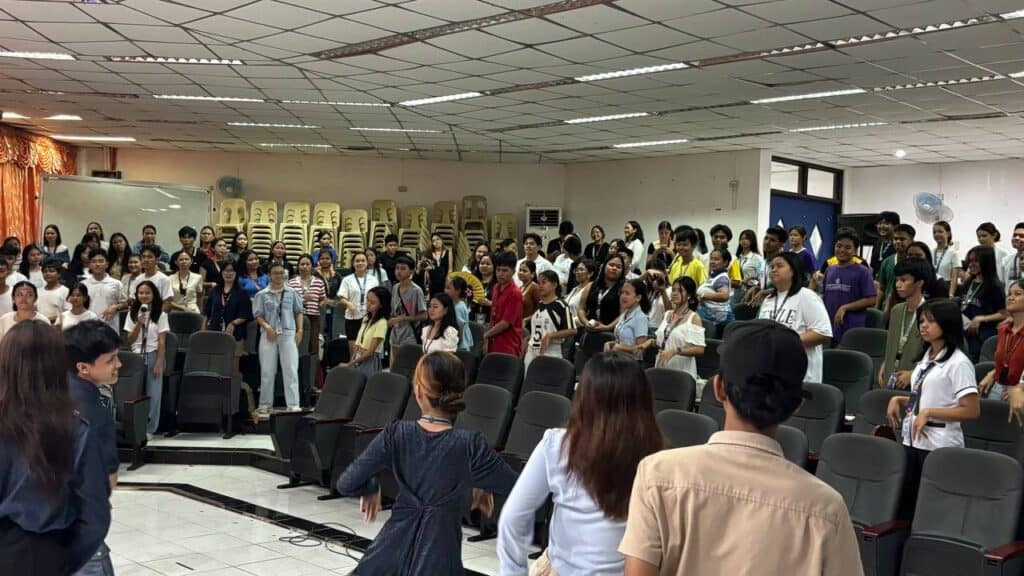LEGAZPI CITY — The 10th Journalism Summit, themed “Mata Kan Bagyo: Shaping Journalists’ Critical Eyes in the Face of Disaster,” brought together aspiring journalists, media practitioners, and student publications for a three-day event organized by the Bicol Organization of Neo-Journalists (BONJour) from Bicol University College of Arts and Letters. Held from March 26-28 at Bicol University, the summit focused on disaster journalism, science communication, and the fundamentals of responsible reporting.
Day 1: Overcoming adversity
The summit commenced on March 26 at the Aquilino P. Bonto Building Amphitheater, despite a power outage that caused disruptions. Organizers swiftly implemented contingency measures, including the use of generators, ensuring the program continued smoothly.
Domingo Peña Jr., provincial director of DOST-Albay, emphasized the importance of humanizing facts through science communication. In an interview with The Archers’ Point, Peña highlighted the need to simplify technical jargon to ensure clarity and relatability.
“There is always a way to make information more engaging and understandable by localizing it or translating it into our dialect. This is particularly important in weather reporting,” Peña explained.
Meanwhile, Alexis Ruivivar, a weather specialist from PAGASA, discussed The Basics of Disaster Reporting, stressing the importance of accuracy and responsible language use to avoid misinformation and panic during calamities.
“As journalists, especially when reporting weather—since it is very dynamic and can change significantly—we need to be cautious with our wording,” Ruivivar explained. “For example, instead of saying, ‘The storm will definitely make landfall in this area,’ it’s more appropriate to say, ‘There is a possibility of landfall between this time and place.’”
She noted that even minor changes in wind intensity could alter a storm’s trajectory, highlighting the need to avoid presenting uncertain information as absolute fact. By reporting a range of possible outcomes, such as identifying a general area at risk rather than a specific municipality, journalists can minimize errors and prevent misinformation.


In the afternoon session, Aireen Perol-Jaymalin, Editor-in-Chief of BicolDotPh, emphasized The Need for Quality Disaster Reportage, particularly in the Bicol Region, which she referred to as “the vicinity of disasters.” She urged journalists to prioritize fact-checking to maintain public trust.
The session concluded with Mark Alvic Esplana, a Philippine Daily Inquirer photo correspondent, who provided practical advice on safe reporting in disaster zones. He explained that the duration of a journalist’s stay in affected areas depends on the severity of the disaster.
“If the storm’s ground zero is an area with strong disaster resilience, like Albay, recovery happens quickly—within two to three days, roads are cleared, and electricity is partially restored,” Esplana noted.
He also emphasized the importance of follow-up reporting: “Beyond the immediate aftermath, journalists can return to cover human-interest stories—how communities rebuild or inspiring efforts that emerge. These stories can capture attention and encourage relief efforts.”
Day 2: Showcasing talent through competitions
The second day of the summit featured highly anticipated press conference competitions, where students demonstrated their skills in various fields of journalism.
The photojournalism competition, held at the New CAL Building, began with a lecture from competition judge George Gio Brondial before participants captured images for their photo essays. Simultaneously, the editorial cartooning competition, guided by Aureus Ken Puoa, saw student participants visually interpreting current events.
Feature writing contestants received an insightful discussion from Prof. Ma. April Mier-Manjares before engaging in an hour-long writing session.
Meanwhile, the radio broadcasting competition at the Bicol University Student Activity Hub, led by Prof. Anacito Dematera, tested participants’ scriptwriting and live reporting skills. The editorial writing event concluded with participants crafting analytical pieces after a lecture by Prof. Frank Peñones.


Day 3: Journ Icon & closing program
As the summit drew to a close, winners from various competitions were recognized, celebrating journalistic excellence among students. The highly anticipated pageant, Journ Icon, was also held at Bulwagan BUeño, OSAS Building, on March 28. Journalism students showcased their creativity and passion by designing outfits from recycled and formal materials.
Terrence John Fernandez of AB Journalism 3B and Charmaine Casais of AB Journalism 2B were crowned Mr. and Ms. Journ Icon 2025 following their outstanding performances in the prestigious event.


Reflections from participants
Beyond competitions and discussions, participants shared key takeaways from the summit.
Gewel Genesis Agase, a second-year journalism student, reflected on his experience, emphasizing how meaningful the event was for him. Unlike the previous year, when he served as a facilitator, this time, he had the opportunity to compete in editorial writing.
“I also liked this year’s theme since it focused on the environment, especially given the severe impacts of climate change and the lack of strong climate action from the government. I also appreciated the advocacies of the journalism icons who highlighted the current situation of environmental defenders, as well as the blatant attacks and intimidation faced by youth leaders, activists, and journalists,” Agase shared.
He stressed that the fight for truth and justice should not end with a single event but must continue beyond expectations. Furthermore, he underscored the importance of resisting oppressive forces, as the summit became a platform for both critical discourse and active response to pressing societal issues.
Meanwhile, Bea Bianca Nicerio of Journalism 3A, who competed in the radio broadcasting category, shared how the summit reinforced her passion for broadcasting. She looks forward to the event each year, especially the press conference, as it provides an opportunity to express her love for the field. For her, the summit serves as a reminder that true dedication allows one to persevere, regardless of challenges.
“Broadcasting has always been my outlet for expressing myself. The people I worked with in high school helped me believe in myself, my abilities, and my potential. Now in college, I still carry the same passion and dedication for broadcasting that I had back then,” Nicerio reflected.
“I am thankful to BONJour for organizing this event, allowing me to continue my passion,” she added. “Every time I win at press conferences, I don’t just feel proud of myself—I feel even prouder of where I came from, of the people who first believed in me and supported me. In every victory, they are always with me.”
Through the voices of participants like Agase and Nicerio, the 10th Journalism Summit not only underscored the significance of responsible journalism but also nurtured the passion and resilience of aspiring media practitioners.
Despite early setbacks, the summit proved to be an insightful and enriching experience, equipping young journalists with the knowledge and skills needed to navigate the ever-evolving media landscape while staying true to the core values of journalism.| Kyla Mae Literal
Updates and photos by Frederick Andes, The Archers’ Point
